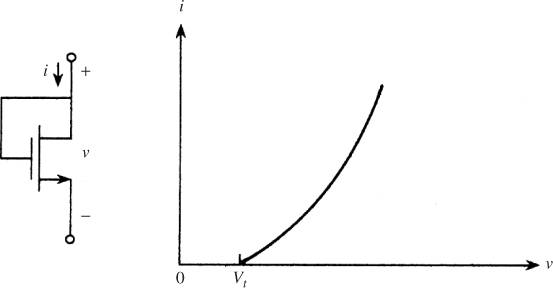Chapter 11
Basic Integrated Circuits Building Blocks
11.1 Introduction
This chapter gives a concise presentation of the elementary circuits, employing the metal oxide semiconductor (MOS) structure, which form the basis for the design of the more composite building blocks of analog integrated circuits [22–24]. The use of MOS transistors as load devices is first introduced followed by the design principles of MOS amplifiers. Next, parasitic capacitances are discussed due to their importance to the operation of signal processing systems at high frequencies. In this context, the cascode amplifier is introduced with the objective of reducing the Miller effect. Finally, the current mirror is introduced followed by a discussion of the CMOS amplifier.
11.2 MOS Active Resistors and Load Devices
Active loads in MOS technology can be constructed from either enhancement-type or depletion-type devices. In the former case, the drain is connected to the gate, while in the latter the source is connected to the gate.
Figure 11.1 shows an NMOS diode-connected enhancement-type transistor together with its v − i characteristic, which is defined by
11.1 ![]()
and it always operates in saturation.
Figure 11.1 A diode-connected MOS transistor

For a transistor biased at a voltage V, we can write
11.2
and for ...
Get Signal Processing and Integrated Circuits now with the O’Reilly learning platform.
O’Reilly members experience books, live events, courses curated by job role, and more from O’Reilly and nearly 200 top publishers.

